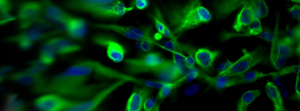Human Primary Cells and Their Applications in Researches
Both human primary cells and other species primary cells play an important role in the modern biology, diseases, and drug design science. But what exactly they are and what can they be employed for in research areas? This article will be an entrance for the basic knowledge on primary cells and human primary cells.
What are primary cells?
Before explaining what human primary cells are, the notion of primary cells should be made clear of. Primary cells are cells that are directly isolated from living organ tissues or blood. Being non-transformed and non-immortalized, primary cells can present the conditions and functions of its tissues where they are isolated, thus they are of significance in providing enhanced replication of their tissues in in vivo studies. They can provide more accurate, direct and relevant results than cell lines. Human primary cells are primary cells extracted from human bodies. There are also other species of primary cells, including rat primary cells and mouse primary cells.
What primary cells can help to achieve in researches?
Primary cells are mainly used to help screen drugs and assist in other process for therapeutic treatments development; check the accuracy of the data gained from animal models on human and reduce the cost and animal tests in some in vivo studies.
To obtain human primary cells is quite complicated with low successful rate, that’s why the ready to use human primary cells as well as other animal primary cells are widely marketed. But to find a reliable supplier counts as primary cells’ life span differs according to their cell types and the storage of these cells may influence their original states.
Creative Bioarray provides over 160 types primary cells from human and 13 other species. For human primary cells along, there are cell 13 systems in this aspect are provided.


Your email address will not be published. Required fields are marked *